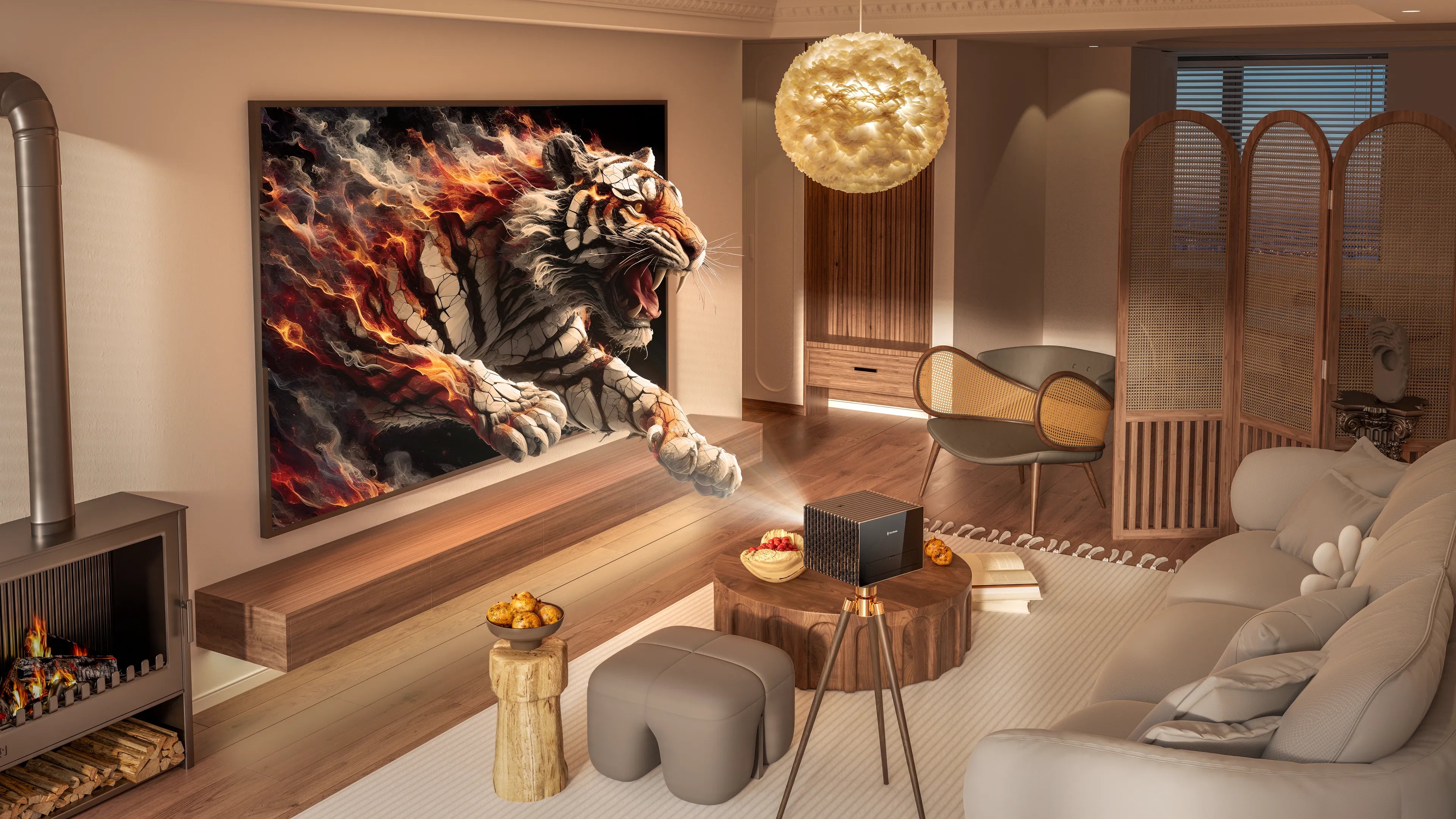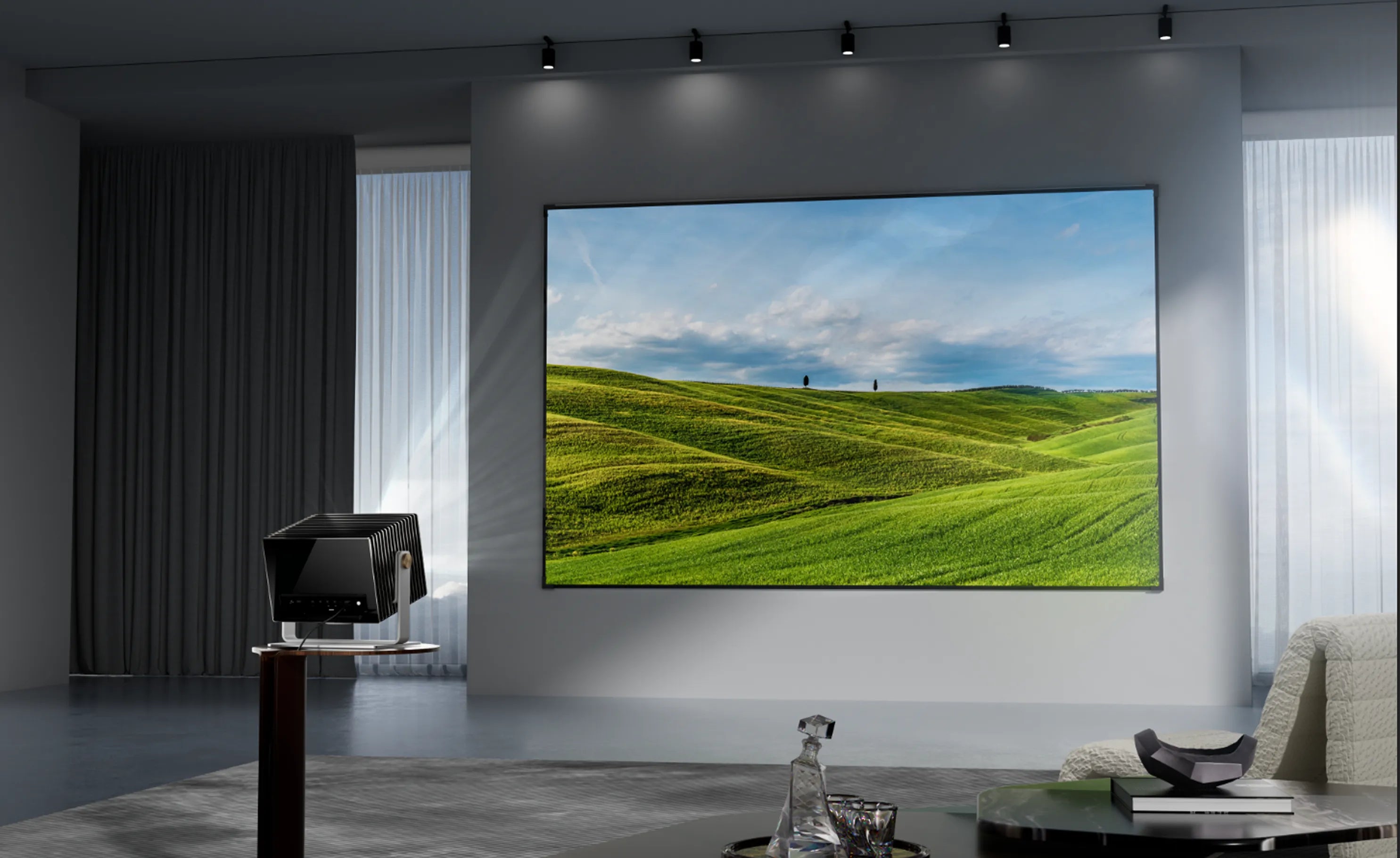Have you ever been engrossed in a dark, atmospheric movie on a projector, only to be jolted out of the experience by the sight of deep shadows that look more like a washed-out gray? If so, you're not alone. This frustrating issue can detract from the immersive experience, turning an epic space battle or a tense nighttime scene into a flat, uninspired image.
This is a classic problem of contrast, and it’s what separates a good home theater from a truly great one. Fortunately, high-end projectors have a sophisticated feature designed to solve this very problem: the Auto Iris.
In this guide, we'll break down exactly what an auto iris is, how it works, and why it’s a game-changing feature for your home cinema and gaming experience.
What Is a Projector Iris?
Before we get to the "auto" part, let's quickly clarify two terms that are often used interchangeably but mean different things: iris and aperture.
- The Aperture: This is simply the opening within the lens that light passes through on its way to the screen. A larger aperture lets more light through (brighter image), while a smaller aperture restricts light (dimmer image).
- The Iris: This is the mechanical device that controls the size of the aperture. Much like the iris in your own eye, it’s made of small, overlapping blades that can open and close.
An easy way to remember the difference is to think of the human eye. The aperture is your pupil (the black hole), and the iris is the colored part of your eye that physically adjusts to make the pupil bigger or smaller.
So, in short: the iris is the tool, and the aperture is the result. With that cleared up, let's get to the "auto" part.
How Auto Iris Works
Here’s where the magic happens. An "Auto Iris" system doesn't require you to manually adjust anything. Instead, it uses the projector's internal processor to do the work for you in real-time.
The process is brilliantly simple yet incredibly effective:
- Frame-by-Frame Analysis: The projector’s processor analyzes the brightness level of the video signal for every single frame being displayed.
- Dynamic Adjustment in Action: Based on this analysis, the iris instantly adjusts its position.
- For Dark Scenes: When the processor detects a predominantly dark scene—like a nighttime shot in a thriller or the vastness of space—the iris automatically closes down. This narrowing of the aperture restricts the amount of light hitting the screen. The result? Black areas on the screen become truly black instead of dark gray, dramatically increasing the perceived contrast.
- For Bright Scenes: When a bright, vibrant scene appears—like an explosion or a sunny outdoor shot—the iris opens up completely. This allows the maximum amount of light to pass through, ensuring the image is as brilliant, punchy, and impactful as possible.
This entire process happens continuously and in milliseconds, without you ever having to touch a button, ensuring a seamless viewing experience.
Key Benefits: Why You Want an Auto Iris Projector
So, what does this rapid, behind-the-scenes adjustment actually mean for your viewing experience?
A Massive Boost in Contrast Ratio
This is the number one benefit. A projector's "native contrast" is the difference between the darkest and brightest image it can create with a static iris. An auto iris creates a dynamic contrast ratio, which is exponentially higher. It allows your projector to produce incredibly deep, inky blacks in one scene and brilliant whites in the next, making the image far more lifelike.
More Visible Detail in Shadows and Highlights
True cinematic quality isn't just about pure black and white. It's about the shades in between. By precisely controlling the light output, the system preserves the subtle details in the darkest and brightest areas of the picture that would otherwise be lost.
A More Immersive, Cinema-Like Feel
When the technology works perfectly, it disappears, leaving you with a stunning picture. The increased depth, improved detail, and dramatic contrast combine to create an image with more "pop" and realism. This powerful visual combination pulls you deeper into the movie or game, creating the truly immersive experience you've been looking for.
Is Auto Iris Always Perfect?
It's a fair question. In the past, older or less sophisticated auto iris systems could sometimes be a minor distraction. Viewers might notice a subtle "pumping" as the brightness shifted, or even hear the faint mechanical sound of the iris adjusting.
However, modern solutions have engineered these problems away. High-end projectors like the Valerion VisionMaster Max showcase the pinnacle of this technology. It utilizes a 6-level precision IRIS adjustment for perfect adaptation across diverse scenarios. More importantly, its industry-first black coating on the iris blades and inner barrel absorbs excess light to deliver flawless dark scenes. This advanced engineering makes adjustments not just seamless and silent, but exceptionally accurate, leaving you with a consistently perfect image.
Conclusion: A Must-Have for Quality Home Cinema
So, what does an auto iris do on a projector? It acts as an intelligent gatekeeper for light, dynamically adjusting its output to match the content on-screen. It delivers the deep blacks of a premium cinema and the brilliant whites of a sunny day, all from the same machine.
For anyone serious about movie watching or immersive gaming, a projector with a well-engineered auto iris system, like the one found in the Valerion VisionMaster Max, is not just a nice-to-have feature. It is an essential component for achieving true, breathtaking cinematic image quality.






